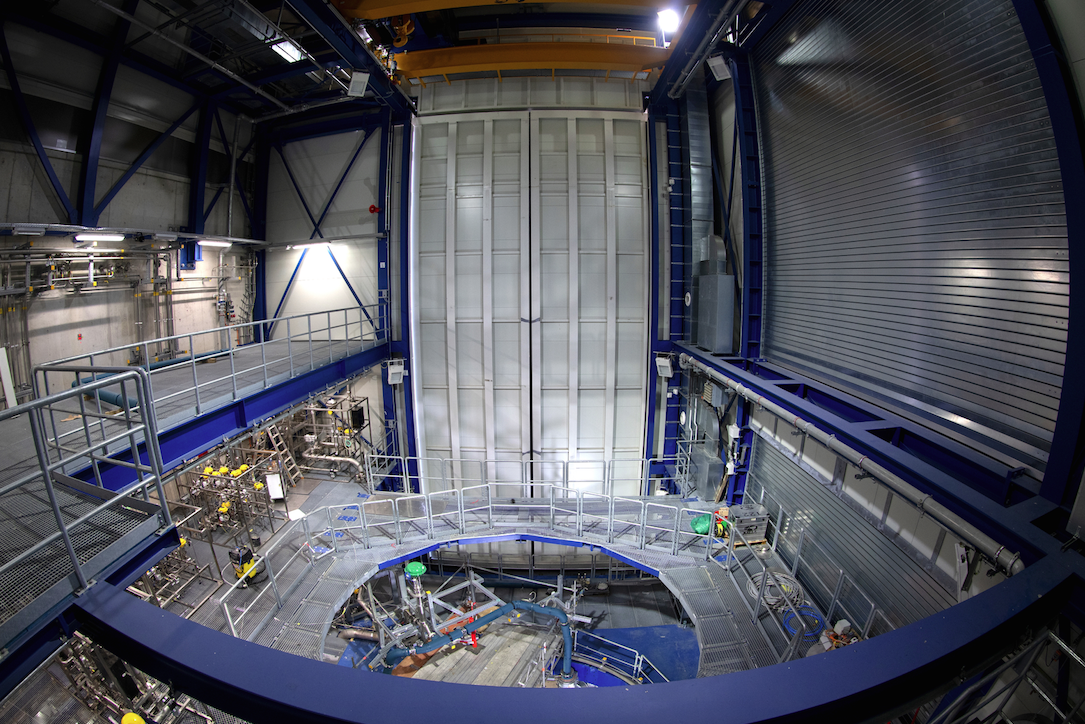The German Aerospace Centre (DLR) has inaugurated the P5.2 test stand at its Lampoldshausen site that will be used to test the cryogenic upper stage of Ariane 6 under sea-level conditions.
The German Aerospace Centre (DLR) has inaugurated the P5.2 test stand at its Lampoldshausen site that will be used to test the cryogenic upper stage of Ariane 6 under sea-level conditions. The inauguration ceremony took place on 26th February.
One of the special features of this test rig is that not only engines and their components can be tested – as is the case with the site’s other test stands – but also the entire cryogenic upper stage of Ariane 6, the ‘Upper Liquid Propulsion Module’ (ULPM).
The test stand was designed and built as part of the development of the Ariane 6 launcher, directly commissioned by ESA. It is financed by German ESA contributions to the Ariane 6 development programme.
Walther Pelzer, Member of the DLR Executive Board and Head of the Space Administration, explains that the new facility comes in response to disruptive changes in the global space industry, an increasingly complex competitive environment and the accelerating pace of innovation in advanced technologies.
The test stand has three main areas. A steel structure will hold the Ariane 6 upper stage in front of a concrete safety wall – the ‘Test cell’. Under this is a concrete chute to funnel away hot exhaust gases from the Vinci engine, and behind the safety wall is a concrete building with five levels for gaseous panels, control, and auxiliary systems.
Fuel and other essentials for P5.2 operations come from existing infrastructure, which has enabled savings on construction costs. Operations inside the test stand are monitored from a central command roomlocated away from the test stand.
The tests will include the Vinci engine firing, non-propulsive ballistic phases, tank pressurisation to increase performance, Vinci reignitions, exhaust nozzle manoeuvres, ending with passivation where all remaining internal energy is removed.

